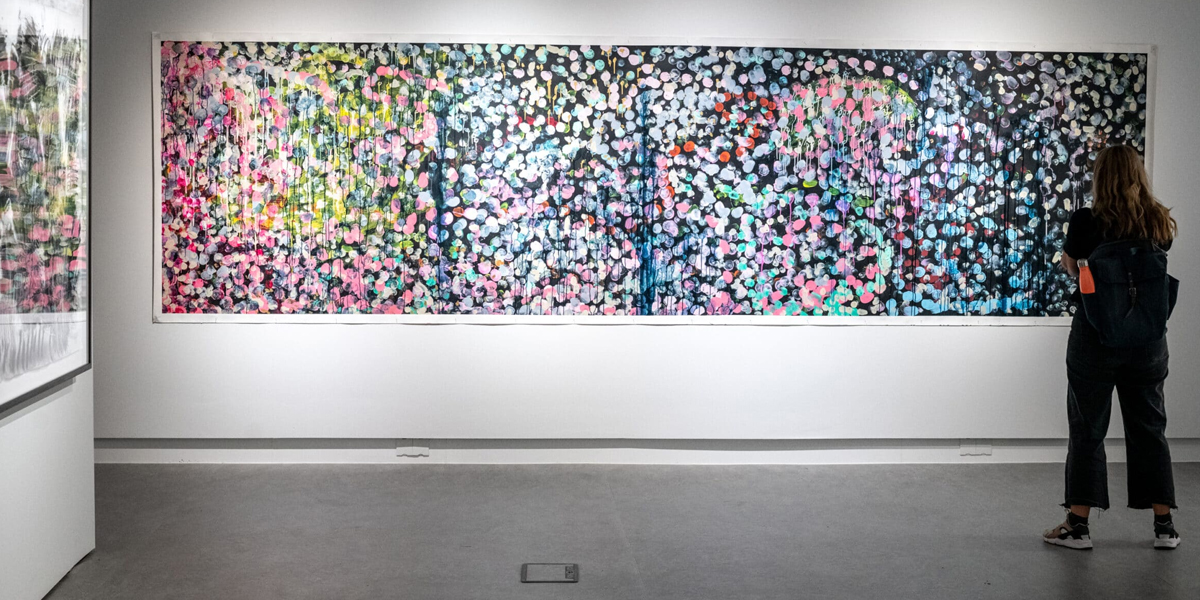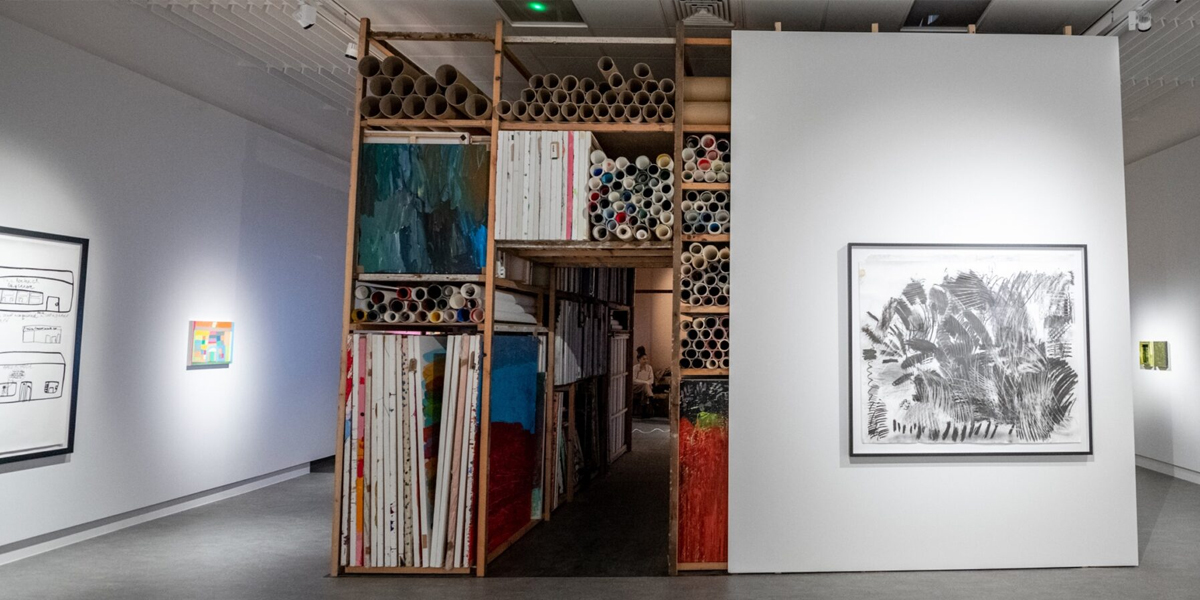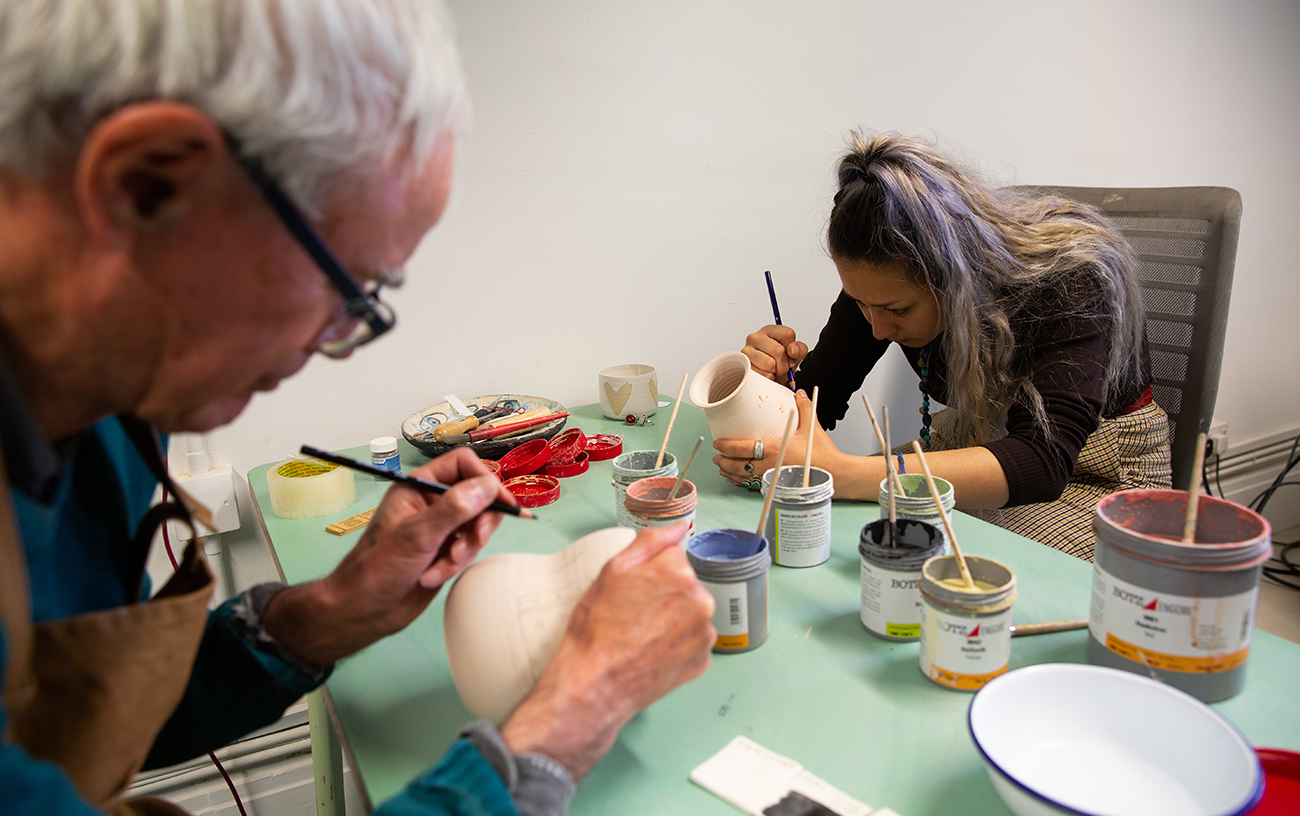“I was blown away by the work I saw. Six years ago, they were told they shouldn’t be in the same building as ‘artists of calibre’.”

Original article by Rhiannon Lucy Cosslett
Neurodiversity has become something of a buzzword in recent years. It’s about replacing the stigmatisation of people with conditions such as autism with the recognition that these are simply normal variations, with qualities of their own. The Turner nomination suggests that the art world finally seems to be catching on.
Though perhaps not fast enough, if some of the attitudes Project Art Works CEO and artist director Kate Adams has encountered are anything to go by: “It was only about six years ago that a head of exhibition somewhere within an organisation said to us, ‘I don’t think it’s right [to have] people with learning disabilities in an exhibition downstairs with an artist of calibre upstairs. They shouldn’t be in the same building.’”

Such attitudes have been infuriatingly commonplace. Adams co-founded Project Art Works with fellow artist Jonathan Cole after attending neurodiverse classrooms with her son, who has complex needs, and noting the high standard of the work. Special schools were “these fantastic anarchic little kingdoms”, Adams tells me, producing talented artists the art world was oblivious to, and who lacked practical support. She set out with two goals in mind: to help create connections with individuals who are sometimes hard to reach, and to change perceptions though showing the work they were making.
“It’s really important within an exhibition to curate a gradual insight in where the work comes from,” she says. “That tends to have a really good impact on people, because they’re seduced by these incredible artworks, many of which are extraordinary, abstract, spirited images. And then there’s a sort of deeper insight into how they were made and who they were made by.”
“With a Turner nomination under their belt, life is changing for the Project Art Works collective and other neurodiverse artists“

Hart Club
Later that week I’m at Hart Club, a studio space in an old estate agent’s shop in Lambeth, London, looking at some of the work its members have produced. Though much smaller and much newer than Creative Growth and Project Art Works, it shares with them a dedication to championing neurodiversity in the arts by working closely with small groups of neurodiverse artists and exhibiting their work.
I’m here to meet Yangdzom Lama, an artist who works here, and whose paintings are like a beautiful, colourful mix of Frida Kahlo-esque symbolism and Tibetan thangka paintings of Buddhist deities. “I don’t remember this, but my dad used to be a thangka painter, and apparently I used to watch him when I was really little. So I guess all the colours got ingrained into my life.”
Yangdzom Lama
“I’d love to be in exhibitions in galleries. That would be a dream come true”
Hart Club was set up by artist and art school graduate Helen Ralli in 2018 after she worked on an exhibition of neurodiverse artists’ work called Great Minds Think Different. “I was really blown away by the work that I saw,” she says. But there was a disconnect between the work’s quality and where it was being seen, which was mostly limited to a community setting, so she resolved to provide a platform for some of the artists to exhibit. “Those events were a really mixed crowd, very different from the kind of typical art openings that I personally was experiencing before,” says Ralli.
Neurodiverse people are often excluded from such environments, not to mention art school. Ralli said she saw first-hand how “incredibly selective” it is: “It felt lacking in terms of a creative environment, because it was the same people.” Hart Club is an alternative that aims to provide time, materials and encouragement in a nonhierarchical environment, with an emphasis on co-working. “I don’t think it’s about emulating the existing structures. It’s not about ticking boxes. It’s about having to completely rework and rewrite what creative spaces look like.”

